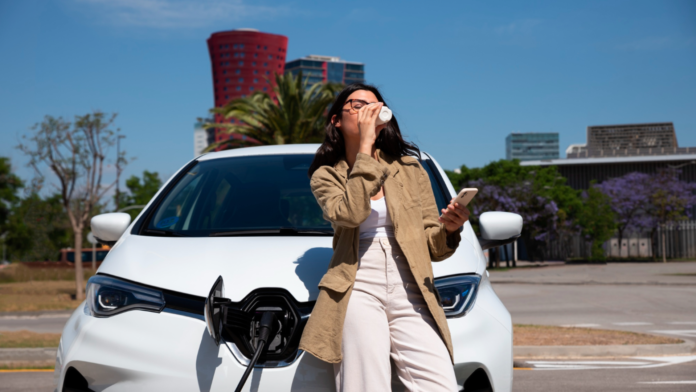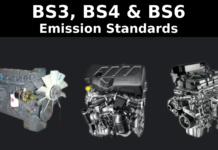Summer is the perfect time for road trips, but did you know that high temperatures can impact your electric vehicle (EV) in unexpected ways? While warm weather can enhance battery efficiency, extreme heat can also accelerate battery wear, reduce charging speed, and strain cooling systems. On the bright side, EVs eliminate the need for fuel, meaning no sweaty gas station stops! In this guide, we explore the Electric Vehicle Pros and Cons in summer, highlighting both the benefits and challenges, along with practical tips to keep your EV running smoothly in the heat.
Electric Vehicle Pros and Cons in Summer: What to Expect

Indian summers are no joke blazing 35-45°C heatwaves, dusty roads, and humidity so thick it feels like you’re wading through the air. For EVs, it’s a mixed bag. No combustion engine means no overheating nightmares, but lithium-ion batteries? They’re not big fans of extreme heat. High temperatures can drain range, stress battery life, and turn charging into a sweaty mission. But here’s the upside no icy roads, no winter slowdowns, and long daylight hours perfect for road trips. It’s a season of extremes, and knowing how to handle it is the key to a smooth ride.
Electric vehicles also offer significant cost savings compared to traditional fuel-powered cars, especially over long-term use. If you’re wondering how EVs stack up against petrol, diesel, or CNG vehicles in terms of running costs, check out this EV vs Petrol/Diesel/CNG Cost Comparison tool. It provides a clear breakdown of expenses, helping you understand the financial benefits of switching to electric, particularly during peak summer months when AC usage and fuel efficiency become major concerns.
According to The Ministry of Power India, EV charging infrastructure is rapidly expanding, making summer road trips more convenient than ever
Electric Vehicle Pros: Why Summer Can Be Great for EVs

Like any car, EVs have their strengths and weaknesses. Let’s break down the Electric Vehicle Pros and Cons when driving in summer.
1. No Engine Overheating Worries
With an EV, summer traffic nightmares become a thing of the past. No overheated engine, no radiator stress just a smooth, silent motor gliding through the heat. I’ve been stuck in Delhi’s blistering traffic, watching petrol cars spew smoke while my EV stayed effortlessly cool. It’s like driving with an invisible heat shield no matter how high the temperature climbs, your ride stays chill.
2. Instant AC Cooling Bliss
Step into an EV on a 40°C day, and you’ll feel like royalty. That electric torque doesn’t just move the wheels it powers an AC that kicks in instantly. No waiting for the engine to warm up just pure, frosty relief the second you need it. I’ve pre-cooled mine with an app while it charged, stepping into what felt like a Himalayan breeze. Summer’s heat doesn’t stand a chance against this perk.
3. Lower Maintenance in Dusty Heat
Summer dust and grime can choke a gas car’s filters and fluids, but EVs? They’re low-drama champs. No oil to change, no exhaust to clog just a motor and battery that shrug off the heat. I’ve driven through Rajasthan’s sandy winds, and while my old diesel coughed up a storm, my EV kept purring with barely a service stop.
Electric Vehicle Cons: Summer Challenges to Watch Out For

1. Battery Range Takes a Hit
Temps above 35°C can cut your range by 10-20%, especially with the AC cranked up. On a trip from Mumbai to Pune, my usual 300 km range dipped to 240 km enough to reach, but it meant an extra charge stop. The battery’s chemical dance gets sluggish in the heat, so plan those summer routes with a little buffer.
2. Charging Stations Get Hot and Busy
Summer’s peak travel season, and everyone’s out to enjoy it including other EV drivers. Charging stations turn into sweaty hangouts with longer waits, especially at fast chargers on highways. I once baked in the Gujarat sun for 30 minutes, wishing for shade and a fan. Plus, some stations throttle speeds in extreme heat to stay safe patience becomes your co-pilot!
3. Extreme Heat Stresses Battery Life
Prolonged roasting isn’t your battery’s friend. Sitting at 40°C+ for days can slowly degrade its capacity over time think of it as sunburn for your cells. I parked unshaded for a week last summer and noticed a tiny dip in battery health. Cooling systems help, but heat stress is a sneaky long-term con you can’t ignore.
Tech Solutions for Electric Vehicle Pros and Cons in Summer

For the Pros:
- Thermal Management Systems: Modern EVs come with liquid or air cooling to keep motors and batteries comfy. This tech amps up the “no overheating” pro and keeps your AC blasting without guilt. Tesla’s system is a benchmark, but even budget EVs like the Tata Tiago have solid cooling.
- Smartphone Apps: Pre-cooling your cabin while charging? That’s app magic like MG’s iSMART or Tata’s ZConnect. It maximizes that instant AC bliss without draining your range on the road.
- Regenerative Braking: This boosts low-maintenance vibes by reusing energy in stop-and-go summer traffic no wear on brake pads, just pure efficiency!
For the Cons:
- Battery Cooling Tech: Advanced EVs use liquid cooling loops to keep batteries from frying. Park in shade or use a sunshade to help this tech fight range loss and heat stress.
- Real-Time Charging Apps: Tools like Plug Share or Charge Map track station status and crowds, helping you dodge busy hotspots. I’ve rerouted to quieter chargers thanks to these gems!
- Portable Chargers: A backup charger (like a 3.3 kW unit) can save you if stations lag. It’s slow, but it’s a lifeline in a pinch perfect for range anxiety in the heat.
Conclusion
Understanding the Electric Vehicle Pros and Cons helps you make the most of summer driving while avoiding potential battery and charging issues. While you enjoy better battery performance and lower energy consumption, excessive heat can take a toll on your battery’s health. However, with smart habits like parking in the shade, optimizing AC usage, and planning charging stops wisely, you can maximize efficiency and protect your EV from summer’s harsh effects. By staying prepared, you’ll enjoy a cool, cost-effective, and hassle-free electric driving experience all season long.
Frequently Asked Questions (FAQs)
Q1. How does heat affect my EV’s battery?
It cuts range short-term (10-20%) and can age it faster long-term shade and cooling tech are your buddies!
Q2. Can I avoid summer range loss?
Yes, to minimize summer range loss, park in the shade, pre-cool your car while plugged in, drive at moderate speeds, and use eco-mode for efficient energy use. Keeping tires properly inflated and limiting AC usage also helps extend battery life.
Q3. Why is my EV’s AC so good?
Instant electric power no engine lag means cold air on demand, often with app-controlled pre-cooling.
Q4. Are charging stations worse in summer?
Yes, summer heat can slow charging due to battery overheating, increased demand, and power grid strain. To avoid issues, charge during cooler hours, park in the shade, and check station status via apps.
Q5. How do I protect my EV in extreme heat?
To protect your EV in extreme heat, park in shaded areas or use a car cover, avoid charging during peak afternoon temperatures, and keep the battery between 20-80% charges. Pre-cool the cabin while plugged in, use eco-mode for efficiency, and check tire pressure regularly.








